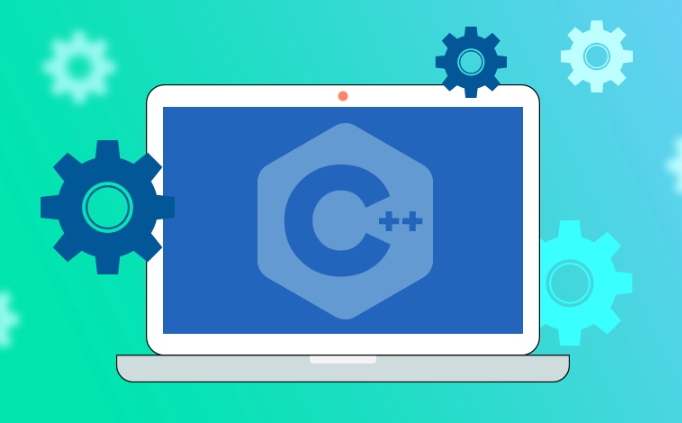STD ::如何在C中移動工作?
std::move並不實際移動任何東西,它只是將對象轉換為右值引用,告知編譯器該對象可被用於移動操作。例如在字符串賦值時,若類支持移動語義,則目標對象可接管源對象資源而無需複制。應使用於需轉移資源且性能敏感的場景,如返回局部對象、插入容器或交換所有權時。但不應濫用,因無移動構造時會退化為拷貝,且移動後原對象狀態未指定。傳遞或返回對象時適當使用可避免多餘拷貝,但如函數返回局部變量時可能已有RVO優化,加std::move反而可能影響優化。易錯點包括誤用在仍需使用的對象、不必要的移動及對不可移動類型使用。總之,std::move是提示而非執行移動,需理解其作用並合理使用。

std::move doesn't actually move anything. It's just a way to tell the compiler, “Hey, you can treat this object as temporary, feel free to steal its resources if needed.” Under the hood, it's a cast — nothing more.

What does std::move really do?
It casts an object to an rvalue reference. That's it. Once something is cast to an rvalue reference (like T&& ), the compiler considers it eligible for move operations.

For example:
std::string a = "hello"; std::string b = std::move(a);
Here, a is treated as a temporary, and b can take over a 's internal buffer without copying — if the string class supports move semantics.

So, std::move enables moves but doesn't perform them directly. The actual move happens in the move constructor or move assignment operator of the type you're working with.
When should I use std::move ?
You should use it when you're done with an object and want to transfer its resources somewhere else — especially when performance matters.
Common scenarios:
- Returning a local object from a function.
- Inserting a temporary into a container.
- Swapping or transferring ownership between objects.
But don't overuse it. If a type doesn't have a proper move constructor, std::move will fall back to a copy. Also, after using std::move , the original object is still valid but in an unspecified state — don't rely on its value afterward.
How does it interact with containers and functions?
When passing or returning objects, using std::move can avoid unnecessary copies — but only when appropriate.
For example, returning a local vector:
std::vector<int> make_big_vector() {
std::vector<int> temp(1000000);
return std::move(temp); // Not strictly needed here
} In this case, the compiler might already apply Return Value Optimization (RVO), so std::move isn't necessary and could even prevent RVO in some cases.
Another example: inserting into a vector:
std::vector<std::string> vs; std::string s = "abc"; vs.push_back(std::move(s)); // Now s is moved, not copied
If you don't std::move , push_back will call the copy constructor. Using std::move tells it to use the move constructor instead.
What's easy to get wrong?
- Moving from something you still need: After moving, the object is still around but in a valid but unspecified state. Don't assume it's empty or has any specific value.
- Using
std::moveunnecessarily: Like in return statements where RVO applies, addingstd::movecan hurt performance. - Trying to move non-movable types: If a class doesn't define move operations,
std::movewill just copy.
Also, be careful with generic code. Sometimes templates may deduce types incorrectly if you mix lvalues and rvalues unexpectedly.
So that's how std::move works — it's a signal, not an action. Use it where appropriate, understand what it enables, and let the compiler handle the rest.
基本上就這些。
以上是STD ::如何在C中移動工作?的詳細內容。更多資訊請關注PHP中文網其他相關文章!

熱AI工具

Undress AI Tool
免費脫衣圖片

Undresser.AI Undress
人工智慧驅動的應用程序,用於創建逼真的裸體照片

AI Clothes Remover
用於從照片中去除衣服的線上人工智慧工具。

Clothoff.io
AI脫衣器

Video Face Swap
使用我們完全免費的人工智慧換臉工具,輕鬆在任何影片中換臉!

熱門文章

熱工具

記事本++7.3.1
好用且免費的程式碼編輯器

SublimeText3漢化版
中文版,非常好用

禪工作室 13.0.1
強大的PHP整合開發環境

Dreamweaver CS6
視覺化網頁開發工具

SublimeText3 Mac版
神級程式碼編輯軟體(SublimeText3)
 如何在C中獲得堆棧跟踪?
Jul 07, 2025 am 01:41 AM
如何在C中獲得堆棧跟踪?
Jul 07, 2025 am 01:41 AM
在C 中獲取堆棧跟踪的方法主要有以下幾種:1.在Linux平台使用backtrace和backtrace_symbols函數,通過包含獲取調用棧並打印符號信息,需編譯時添加-rdynamic參數;2.在Windows平台使用CaptureStackBackTrace函數,需鏈接DbgHelp.lib並依賴PDB文件解析函數名;3.使用第三方庫如GoogleBreakpad或Boost.Stacktrace,可跨平台並簡化堆棧捕獲操作;4.在異常處理中結合上述方法,在catch塊中自動輸出堆棧信
 如何從c打電話給python?
Jul 08, 2025 am 12:40 AM
如何從c打電話給python?
Jul 08, 2025 am 12:40 AM
要在C 中調用Python代碼,首先要初始化解釋器,然後可通過執行字符串、文件或調用具體函數實現交互。 1.使用Py_Initialize()初始化解釋器並用Py_Finalize()關閉;2.用PyRun_SimpleString執行字符串代碼或PyRun_SimpleFile執行腳本文件;3.通過PyImport_ImportModule導入模塊,PyObject_GetAttrString獲取函數,Py_BuildValue構造參數,PyObject_CallObject調用函數並處理返回
 什麼是C中的POD(普通舊數據)類型?
Jul 12, 2025 am 02:15 AM
什麼是C中的POD(普通舊數據)類型?
Jul 12, 2025 am 02:15 AM
在C 中,POD(PlainOldData)類型是指結構簡單且與C語言數據處理兼容的類型。它需滿足兩個條件:具有平凡的拷貝語義,可用memcpy複製;具有標準佈局,內存結構可預測。具體要求包括:所有非靜態成員為公有、無用戶定義構造函數或析構函數、無虛函數或基類、所有非靜態成員自身為POD。例如structPoint{intx;inty;}是POD。其用途包括二進制I/O、C互操作性、性能優化等。可通過std::is_pod檢查類型是否為POD,但C 11後更推薦用std::is_trivia
 如何將函數作為C中的參數傳遞?
Jul 12, 2025 am 01:34 AM
如何將函數作為C中的參數傳遞?
Jul 12, 2025 am 01:34 AM
在C 中,將函數作為參數傳遞主要有三種方式:使用函數指針、std::function和Lambda表達式、以及模板泛型方式。 1.函數指針是最基礎的方式,適用於簡單場景或與C接口兼容的情況,但可讀性較差;2.std::function結合Lambda表達式是現代C 推薦的方式,支持多種可調用對象且類型安全;3.模板泛型方式最為靈活,適用於庫代碼或通用邏輯,但可能增加編譯時間和代碼體積。捕獲上下文的Lambda必須通過std::function或模板傳遞,不能直接轉換為函數指針。
 STD ::如何在C中移動工作?
Jul 07, 2025 am 01:27 AM
STD ::如何在C中移動工作?
Jul 07, 2025 am 01:27 AM
std::move並不實際移動任何東西,它只是將對象轉換為右值引用,告知編譯器該對象可被用於移動操作。例如在字符串賦值時,若類支持移動語義,則目標對象可接管源對象資源而無需複制。應使用於需轉移資源且性能敏感的場景,如返回局部對象、插入容器或交換所有權時。但不應濫用,因無移動構造時會退化為拷貝,且移動後原對象狀態未指定。傳遞或返回對象時適當使用可避免多餘拷貝,但如函數返回局部變量時可能已有RVO優化,加std::move反而可能影響優化。易錯點包括誤用在仍需使用的對象、不必要的移動及對不可移動類型
 C中的可變關鍵字是什麼?
Jul 12, 2025 am 03:03 AM
C中的可變關鍵字是什麼?
Jul 12, 2025 am 03:03 AM
在C 中,mutable關鍵字用於允許修改對象的特定數據成員,即使該對像被聲明為const。其核心用途是保持對象邏輯上的常量性同時允許內部狀態變化,常見於緩存、調試計數器和線程同步原語。使用時需將mutable置於類定義中的數據成員前,僅適用於數據成員而非全局或局部變量。最佳實踐中應避免濫用、注意並發同步,並確保外部行為不變。例如std::shared_ptr用mutable管理引用計數以實現線程安全與const正確性。
 智能合約是什麼?智能合約APP有哪些?
Jul 07, 2025 pm 08:42 PM
智能合約是什麼?智能合約APP有哪些?
Jul 07, 2025 pm 08:42 PM
智能合約是區塊鏈技術的核心創新之一,它通過代碼實現了無需信任的自動化協議。它不是一個可以下載的APP,而是一種底層技術。對於普通用戶來說,您接觸到的是構建在以太坊、Solana等平台上的各類DApp。對於開發者而言,選擇哪個平台取決於項目的具體需求,如性能、成本、安全性以及目標用戶群體。隨著技術不斷成熟,智能合約將在金融、遊戲、物聯網等更多領域展現出巨大潛力。
 C中的無效指針是什麼?
Jul 09, 2025 am 02:38 AM
C中的無效指針是什麼?
Jul 09, 2025 am 02:38 AM
AnullpointerinC isaspecialvalueindicatingthatapointerdoesnotpointtoanyvalidmemorylocation,anditisusedtosafelymanageandcheckpointersbeforedereferencing.1.BeforeC 11,0orNULLwasused,butnownullptrispreferredforclarityandtypesafety.2.Usingnullpointershe







